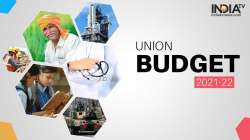Budget 2021: Sitharaman announces Voluntary Vehicle Scrapping Policy - What is it?
Finance Minister Nirmala Sitharaman presented the Union Budget 2021-22 on Monday, which was approved by the Union Cabinet headed by Prime Minister Narendra Modi earlier today.

Finance Minister Nirmala Sitharaman on Monday announced the voluntary vehicle scrapping policy, to phase out old vehicles. In addition, the finance minister also announced fitness tests for personal vehicles after 20 years. She said this will promote fuel-efficient and environment-friendly vehicles while cutting on India's huge import bills. Earlier Union Road Transport Minister Nitin Gadkari had said last week that the policy to scrap more than 15-year-old vehicles owned by the government departments and PSUs is likely to be notified soon and will be implemented from April 1, 2022.
The policy is already approved by the government.
"The minister... approved the policy of deregistration and scrapping of vehicles owned by government department and PSU, which are above 15 years in age," the Ministry of Road Transport and Highways had said in a statement.
"It is to be notified, and will come into effect from 1st April 2022," the statement had said.
On July 26, 2019, the government had proposed amendments to motor vehicle norms to allow scrapping of vehicles older than 15 years in a bid to spur the adoption of electrical vehicles.
"We have submitted the proposal and I am expecting that we will get approval as early as possible for the scrapping policy," Gadkari had said on January 15.
The minister had also said that once the policy is approved, India will become an automobile hub and there will also be a reduction in the prices of automobiles.
He had said recycled material from old vehicles will help reduce the prices, adding that the automobile industry's turnover, which is Rs 4.5 lakh crore with Rs 1.45 lakh crore exports, will get a boost.
Earlier, Finance Minister Nirmala Sitharaman had said that a policy for the scrapping of old vehicles "is in the works" and will be announced after ministries concerned "fine-tune" it.
In May 2016, the government had floated a draft Voluntary Vehicle Fleet Modernisation Programme (V-VMP) that proposed to take 28 million decade-old vehicles off the road.
The finance minister said Budget 2021 proposals rest on six pillars: Health and Well-Being, Physical and Financial capital and infrastructure; Inclusive Development for Aspirational India; Reinvigorating Human Capital Innovation and R&D, Minimum Govt., Maximum Governance.
Sitharaman presented the Union Budget 2021-22 on Monday, which was approved by the Union Cabinet headed by Prime Minister Narendra Modi earlier today.
Sitharaman, who had in her first budget in 2019 replaced leather briefcase that had been for decades used for carrying budget documents with a traditional red cloth 'bahi-khata', had earlier this month stated that the budget for the fiscal year beginning April will be "like never before".
It has to be a vision statement, a roadmap to get the world's fastest-growing major economy back on track.